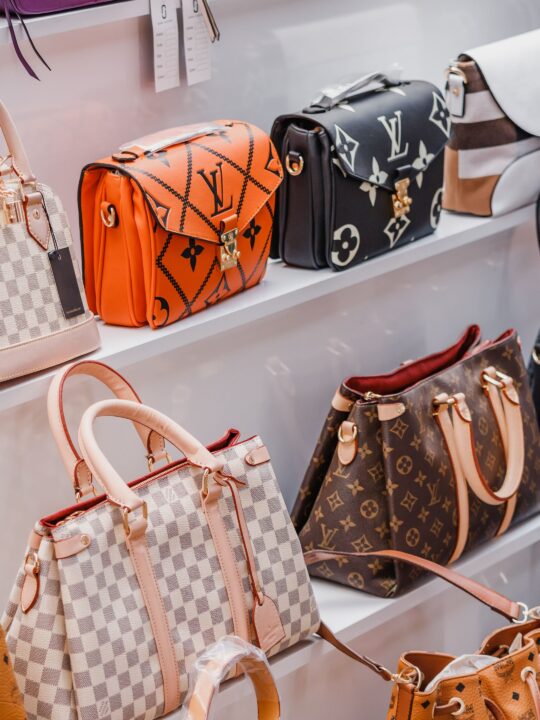What if…retail brands can beat the dupe craze by engaging with it?

Once upon a time, retail and clothing brands needn’t lose much sleep over copycat products. While a small portion of their market might’ve sought out cheap knockoff garments, the younger generations overwhelmingly disapproved, with the overall integrity of the industry held intact by a culture of subtle shame – ‘those aren’t real, are they?’. Owning an off-brand clone, or ‘dupe’, was something to disguise, not show off.
Fast forward a decade, and we see quite a different picture emerging from the social media-fuelled flurry of Gen Z life, where, rather than parading their dupes as genuine products, they are actually showing them off as distinctly unauthentic. Across Tiktok, buyers are exhibiting their recently bought cheaper alternatives to high end products, directing their followers to follow suit, and receiving much online praise for doing so. Thriftiness and strategic buying are apparently very much in vogue.
So what can brands do about this? With thousands of users flocking to these far cheaper products, it’s easy to feel like it’s completely out of your control – maybe even an existential threat to the retail industry itself. However, brands shouldn’t panic. The first step is to engage, rather than ignore…
When high-end activewear brand Lululemon identified dupes of their Align leggings cropping up, they had a choice. They could either ignore their presence and push on with their standard marketing efforts and hope to prevail, or they could try something far more interesting. In the end, they settled on the latter and set up a dupe swap, in which they invited purchasers of knockoff Lululemon clones to come to pop up sites and trade them in for their genuine products. Not only that, but they have taken to the very domain of the dupe craze itself – Tiktok – to do battle. They’ve since put out a range of video content drawing attention to their scheme, inviting more and more people to participate.
Giving away expensive products? It’s a bold move, and one that has very much paid off. What Lululemon has done here is use the dupes trends to draw attention to their product’s value. The swap is a demonstration of quality contrast – by trading in knockoffs, swappers are shown the significantly higher quality of the real product, undermining the idea of dupes and their seemingly irresistible price tags. Not only this, but they have shown themselves to be environmentally conscious, much in contrast to the manufacturers of the dupes, by recycling the material of all handed-in leggings. This scheme has brought ‘you get what you pay for’ back into centre stage.
Not every brand can afford to set up a high budget dupe swap, nor may that be the right approach for everyone. But the one takeaway from Lululemon’s campaign that all brands can take, is the idea of demonstrating value. Brands need to be aware of what they are competing with in the minds of young people, why their product is superior, and why they are worth the investment. In the case of fashion and activewear, the obvious difference is quality. The real thing lasts, and as Lululemon have since stated, ‘No one is missing their dupes’.
So how are brands to demonstrate their value in the face of dupe culture? There are several ways to do this.
Document your product journey
One of the real values of genuine products is the thought, influence, and design that’s gone into it. By putting an emphasis on design routes and creative origins when discussing and presenting your products online, you highlight the depth of value – something that dupes don’t have. Consumers buy into your story and feel they are a part of it.
Be transparent
One thing that Gen Z, and the upcoming Generation Alpha, will look for in brands today is transparency, and that their manufacturing and distribution have no shady secrets. Mass-produced knockoffs produced by cheap labour are not ethical or environmentally conscious. By placing emphasis upon manufacturing processes and origins, brands can make a strong case against dupes, and for their products.
Demonstrate quality
How are your products made, and what are they made from? You need to show your products are built to last, and the superior quality is worth the extra investment. Cheaper doesn’t mean better, but you’ve got to convince swathes of cash-strapped young people of this.
Brands need to accept that simply ignoring dupes and dismissing this growing trend as some kind of illegitimate fad, will do them no favours. To compete with and overcome the rise of retail product dupes, brands need to understand and engage with the culture in order to demonstrate value, and retain customer loyalty.
Ultimately, tackle dupes head on. Change the narrative and show Gen Z and Gen A that you’re the real deal, and it’s worth coming along for the ride.

 Back to articles
Back to articles

